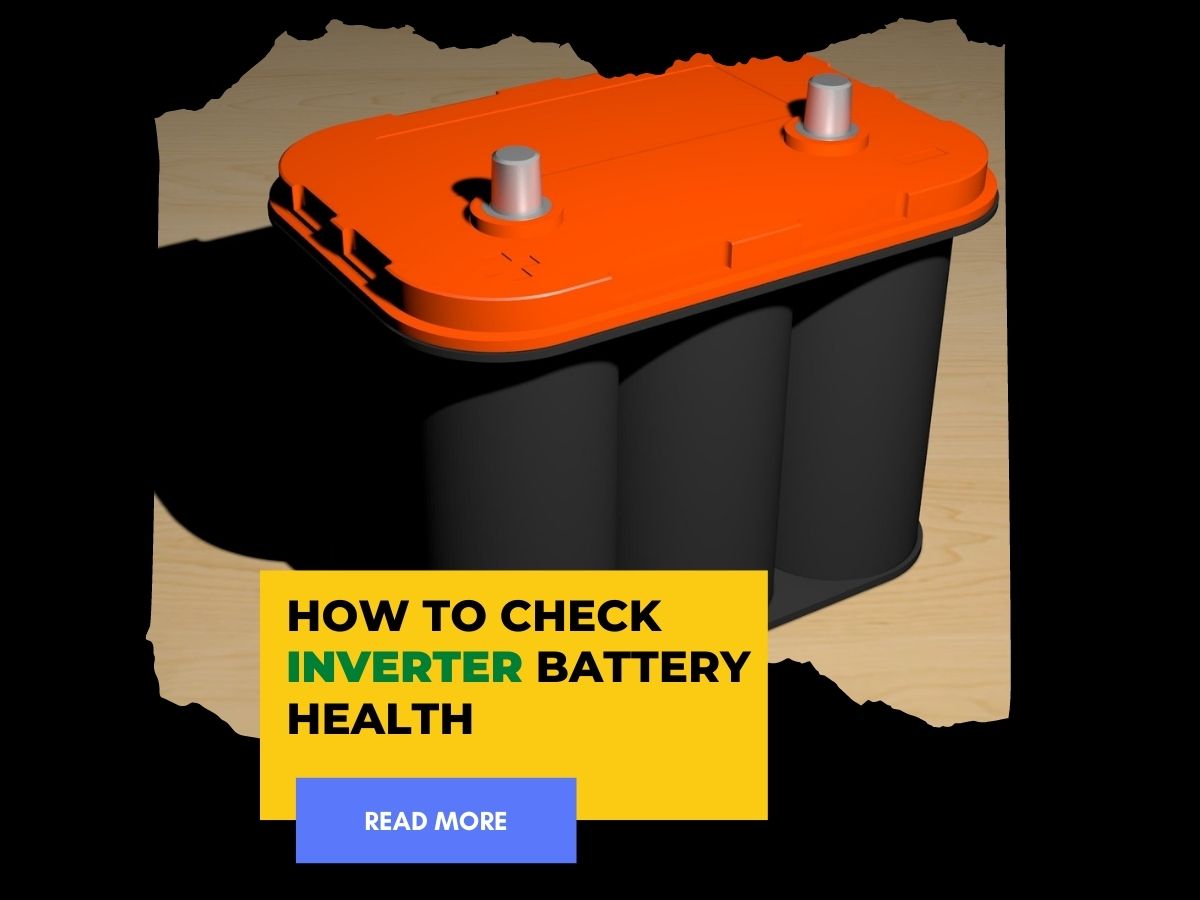How To Check Inverter Battery Health?

Inverter batteries are used in various applications, including small appliances like microwaves and motors. When they fail, the inverter battery will stop charging and drain the device's powering.
Many of these batteries are connected to electronic devices that could be dangerous to users, so knowing if your inverter battery is healthy is crucial.
Inverter Battery Health: Some Common Signs
- Loss in cooling performance (less than 50% efficiency)
- Loss in energy production (less than 50% efficiency)
- Rapid rise or drop in voltage when connected to mains power, i.e., voltage transition between 110V-120V and 220 V-240 V, might be very sharp and sudden.
Inverter batteries rely on the electrolytic solution inside the cells to carry current from an external power source. When an inverter battery is failing, it may start losing capacity rapidly.
It can lead to a cooling loss in small appliances or loss of energy production for larger devices like air conditioners, freezers, generators, etc.
Steps To Check inverter battery health
1) Fully charge the battery
Properly charging an inverter battery is the first step in checking its health. It is important to fully charge the inverter battery so that it does not discharge during the check.
It is also recommended to use a charger to deliver a full charging current for about 24 hours. It will ensure that any fluctuations in the battery due to short circuits are ironed out completely.
2) Unplug the battery from the invertor:
Once the inverter battery has been fully charged, unplug it from the inverter to check for any irregularities. It is important not to have any load connected to the battery.
Also, be sure that both the positive and negative leads are disconnected to avoid accidental reverse polarities.
3) Check terminals are clean:
Ensure that the terminals of the battery are free from dust and grime. It will ensure that they are in proper contact with the meter to record a proper reading. The improper connection might lead to a preliminary test.
4) Analyze acid levels:
Proper acid levels in the cell are essential in determining an inverter battery's health. If you are testing a sealed lead acid battery, you can use this special meter for full-scale testing to determine the acid levels in different cells.
It will help you check for any damage or leaks on the electrolyte solution inside these batteries and also lets you know how much charge is left in these batteries for future use.
5) Check acid color:
To check for acid levels, you will have to check the acid color inside the battery. It can be done using special acid test strips available in different colors according to the pH level.
The acid level should be visually checked for its color and density inside each battery cell. The denser and darker the color, the higher the acid content. If it is colorless, then you are good to go!
6) Check the voltage and specific gravity
Inverter batteries are charged through the use of a charger. To check for loss in capacity, voltage and specific gravity should be checked. It is essential to have a full battery charge and check the voltage against an electronic meter to know if there are consistent fluctuations in voltage.
If the voltage varies too much, you will have a problem with the battery itself. The specific gravity should also be checked for its consistency to not vary too much throughout the test.
7) Check for faulty connections:
Sometimes, connections at the terminals of an inverter battery can become loose and cause problems. One way to test this is by applying a low current load to the inverter battery. After this test, if it remains functional, there is likely a loose connection.
At times, some components may have been exposed to water or direct sunlight, which may cause corrosion to the terminals of any component in contact with it. In such cases where connections are weak, they will not be able to carry as much current as they usually do.
It might also damage the cell due to excessive heat produced during charging and discharging cycles and eventually fail.
8) Make sure the surfaces are clean and dustproof:
Check the surface of the inverter battery to ensure no cracks and damaged areas. Any impact or shock on the battery may cause damage to its internal structure and render it useless.
Conclusion:
It is crucial to ensure that your battery is in great condition. It will guarantee that the inverter you use will continue to function properly and satisfy your demands over time.
Choose for the best batteries for your car or bike at the best price. Search for the dealer near you on finndit.com. You will get correct and relevant information regarding the batteries on Finndit.
View Also -
